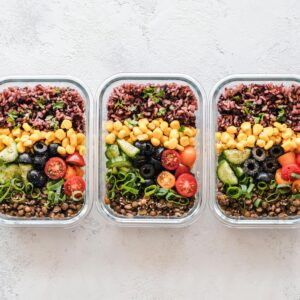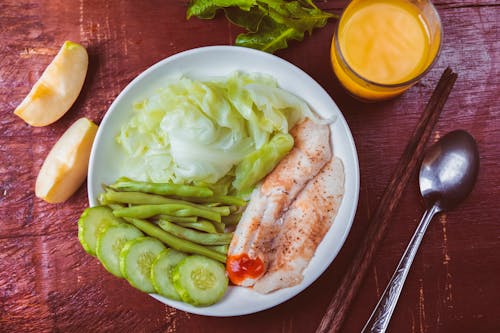Meal preparation is all about planning and preparing meals in advance, so they’re ready to go when needed. It’s not just a trend; it’s a practical approach to eating well and managing time efficiently. Keeping meals organized can eliminate the stress of last-minute cooking and help stick to a healthy eating plan.
The advantages of meal prepping are extensive. Not only does it save time during busy work weeks, but it also supports better food choices by avoiding unhealthy takeout options. You can easily manage portion control and customize meals to fit dietary needs, whether that’s more protein, fewer carbs, or extra veggies.
To kick off meal prepping, gathering the right tools can make a huge difference. Essential items include high-quality storage containers, a reliable set of measuring spoons and cups, and some solid cooking basics like a chopping board and a sharp knife. Trust me, investing in good kitchen gear now will save you loads of hassle later.

Despite its benefits, meal prepping is often misunderstood. Some folks think it requires cooking every single meal in advance, but it doesn’t have to be that rigid. You can just focus on prepping ingredients or one meal per day to start. This flexibility makes meal prepping suitable for just about any lifestyle or dietary preference.
Meal prepping is a powerful ally for achieving personal dietary goals, be it weight loss, muscle gain, or maintaining current health levels. As it’s tailored to your own nutritional needs, you’re in full control, which can be empowering and incredibly satisfying.
How to Effectively Meal Prep: A Step-by-Step Guide
Getting into meal prepping can feel overwhelming at first, but having a plan in place makes all the difference. The first step is setting up your kitchen workspace for seamless efficiency. Decluttering countertops and ensuring you have easy access to your cooking tools can save time and effort in the long run.
Once your space is ready, it’s time to create a meal prep calendar. This involves planning your meals for the week, balancing nutritional requirements, and making sure you’re switching things up enough to keep it interesting. A good calendar not only has meal details but also designates time slots for cooking and prepping.
When planning meals, balancing the nutritional content is key. Ensuring each meal has the right amount of proteins, carbohydrates, and fats allows for a balanced diet. Incorporating a variety of colors and textures not only makes meals exciting to eat but also provides a range of nutrients.
Batch cooking is a meal prep technique where large quantities of food are prepared in one go. Cooking in bulk not only saves time during the week but also makes portioning easier. Dishes like soups, stews, and casseroles are perfect for this approach as they store well and can be flavored up with different spices and seasonings for variety.
Effective storage is central to making sure your meals stay fresh throughout the week. Using glass containers or BPA-free plastic can help preserve flavors and prevent contamination. Label each container with the date it was cooked and what’s inside. It makes deciding what to eat a straightforward experience when you don’t have to guess what’s in each container.

Meal Planning Mastery: The 7 Principles
Nailing meal prep involves having a framework in place, and that’s where the seven principles of meal planning come in. Understanding and applying these guidelines can turn meal prep from a chore into a manageable and even enjoyable task.
First up, balanced nutrition should always be the goal. It means making a conscious effort to include a mix of proteins, vegetables, and grains, ensuring each meal supports your dietary needs. This balance not only fuels the body effectively but also adds variety to your diet, which keeps meals interesting.
Incorporating variety is crucial in avoiding meal fatigue. This doesn’t mean reinventing the wheel with every dish, but rather introducing new ingredients, spices, or cooking methods each week. Mixing things up prevents you from getting stuck in a rut where meals feel like a monotonous necessity rather than a delight.
Catering to dietary restrictions is another principle to consider. Whether due to allergies, lifestyle choices, or health concerns, ensuring your meal prep accommodates these restrictions keeps you on track. Swapping gluten or dairy ingredients for alternatives can make a world of difference without compromising taste.
Setting realistic portion sizes is possibly one of the trickiest parts. While it’s tempting to just wing it, calculating portion sizes based on nutritional needs helps avoid over- or under-eating. Container kits that portion out meals can help take the guesswork out of it.
A focus on seasonal and local ingredients isn’t just about sustainability but also about flavor and cost. Seasonal produce tends to be more affordable and packed with nutrients, making it a smart choice for any meal prep plan.
Shopping smartly is vital for cost-effective meal prep. Planning meals around what’s on sale or in season can stretch a budget without sacrificing quality or variety.
Finally, food safety shouldn’t ever be overlooked. From properly storing ingredients to ensuring appropriate cooking temperatures, taking these precautions guarantees meals are not just tasty, but also safe to consume.
Pitfalls to Avoid for Seamless Meal Prep
Avoiding unnecessary complexity in meal prep is crucial for maintaining consistency and enjoying the process. When starting, it’s easy to get carried away with elaborate recipes and specialty ingredients, but this can quickly become overwhelming. Keeping it simple is the secret to success, especially when you’re still honing your meal prep skills.
Boredom is the enemy of meal prepping, and tackling it requires creativity. Repeating the same meals week after week can lead to a lack of enthusiasm for eating, let alone prepping. One way to combat this is by using base ingredients in multiple ways. For example, cooked chicken can be used in salads, wraps, or pasta dishes, turning one prep session into multiple meal possibilities.
Storage mishaps can derail even the most well-intentioned meal plans. Whether it’s food going bad too quickly or not knowing what’s in your fridge, avoiding these pitfalls is about implementing smart systems. Labeling containers clearly and using the right ones for freezing or refrigerating can prolong the freshness and help keep your efforts from going to waste.
Judging your portion sizes can leave you hungry or lead to food waste. It’s a common mistake, but one that’s easily rectified with a little planning. Measuring out portions during the prep phase ensures you’re neither over-preparing nor cutting your servings too short. Nutritional needs vary from person to person, so it’s worth taking a bit of time to figure out what works for you.
Lack of nutritional balance can undo the benefits of meal prepping altogether. A meal plan that consistently lacks the necessary nutrients may leave you feeling tired or undernourished. It’s worth putting in the effort to understand the macro and micronutrient needs specific to your diet goals, ensuring each meal is contributing positively to your wellness.

Best Foods for Meal Prepping
Selecting the right foods for meal prepping is essential to ensure meals remain fresh and delicious throughout the week. Ingredients that have a long shelf life and reheat well are key players in any meal prep lineup.
Identifying foods with longevity helps in avoiding mid-week grocery runs. Whole grains like rice, quinoa, and oats are staples—they store well and are versatile enough to be paired with various proteins and vegetables. Legumes such as beans and lentils can also add variety and nutrition.
Proteins are crucial in meal planning. Lean meats like chicken and turkey often top the list due to their adaptability and flavor retention when reheated. For those who prefer plant-based options, tofu and chickpeas are excellent choices—they soak up flavors beautifully and maintain texture.
Versatile vegetables should be a part of your prep strategy. Consider choosing vegetables like carrots, broccoli, and peppers. They can be eaten raw, roasted, or steamed, providing options throughout the week. Don’t shy away from frozen veggies either—they can be just as nutritious as fresh ones and are incredibly convenient.
Grains and legumes come in handy for bulk cooking, too. They not only serve as a hearty base for meals but are also affordable and accessible. Preparing a large batch of quinoa or lentils at the beginning of the week can make assembling meals quick and effortless.
Snacks and side dishes are often overlooked in meal prepping, but can be a lifesaver. Items like hummus, boiled eggs, and mixed nuts are perfect for on-the-go snacking and deliver a good nutritional punch. Building a collection of quick, healthy snacks can help curb impulsive eating habits.










